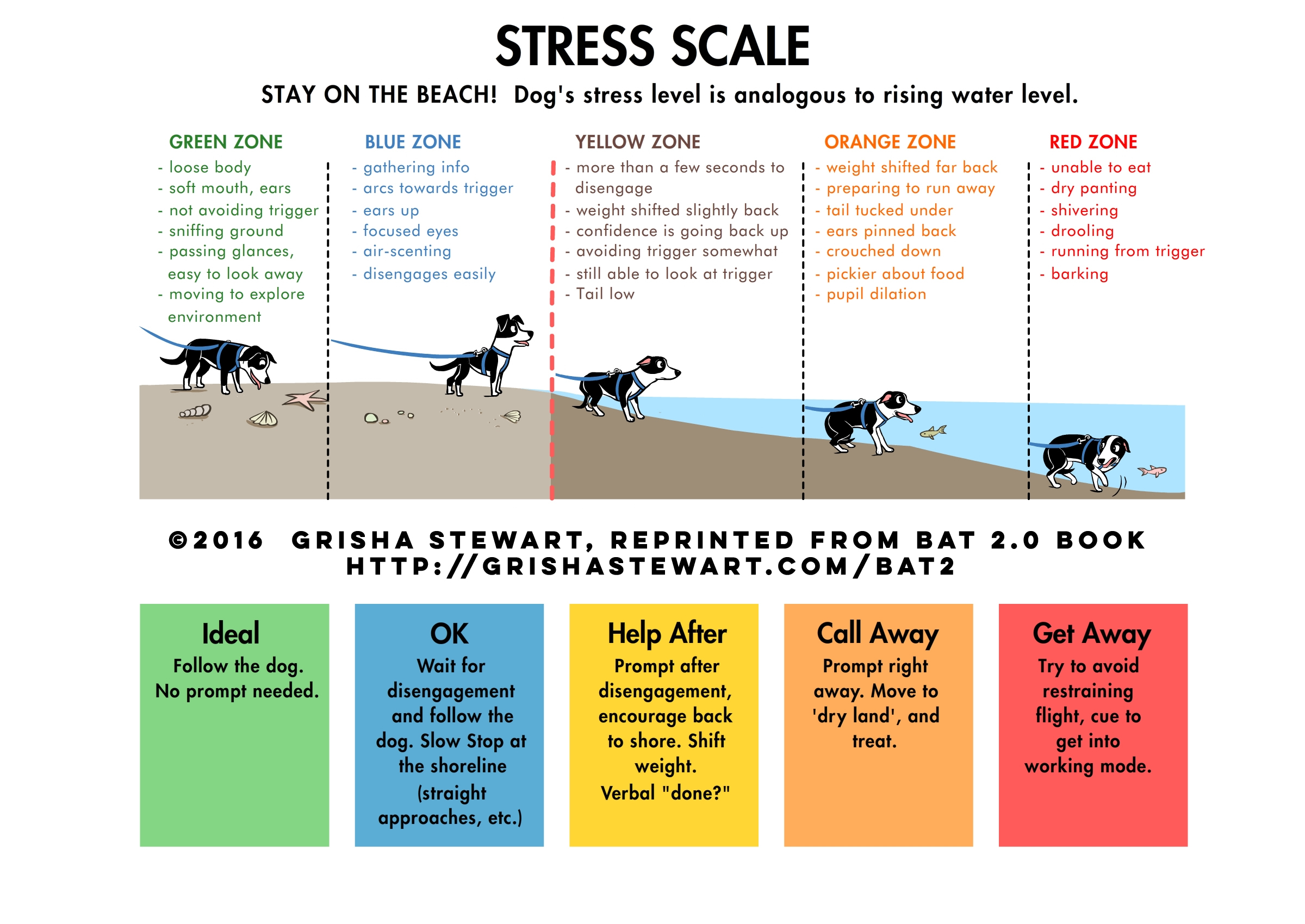Have you ever heard of this phrase?
Just in case you haven’t:
The idiom “the straw that broke the camel’s back” describes a minor or routine action that causes an unpredictably large and sudden reaction due to the cumulative effect of previous small actions. It alludes to the proverb “it is the last straw that breaks the camel’s back”. – Wikipedia
It’s a real thing, right? Imagine you’ve had one of those days where every little thing that could go wrong, does. And by bedtime (or maybe sooner), just one tiny little inconvenience becomes the final straw and you explode into tears or with rage.
Well, would you believe me if I told you that the same thing happens to dogs?
In the dog world, we call it “Trigger Stacking”.
What is a Trigger?
A trigger is defined as ‘An event, person, or animal, noise or other factor that leads to an undesired or abnormally large reaction. If your dog barks at white dogs then white dogs would be considered to be triggers for your dog reaction.’ (Grisha Stewart, BAT 2.0, P. 276)
Tigger stacking is defined as ‘Stress accumulation due to exposure of multiple triggers, either simultaneously or close enough in time that the dog’s reactivity has not returned to normal. For example: If a sound sensitive dog who’s afraid of children hears a loud crash before he sees a child, he is more likely to bite than if he had met the child under calmer circumstances.’ (Grisha Stewart, BAT 2.0, P. 276)
Sometimes we hear
“The dog bit me out of nowhere!
I was just trying to brush them!”
That’s very likely true, but when you haven’t taken into account the rest of the dogs experiences in the day, or week before, that “bite from nowhere” isn’t really from “nowhere” at all.
Just think back to that day where you felt everything that could go wrong, did. I know you’ve had one, we all have. To anyone watching from the outside, they may not realize the kind of day you’re having. You’ve said hello and smiled, just like any other day. But inside you’re screaming “I just want to go back to bed and hide!” But you can’t.
And neither can your dog.
So, what can we do?
We can watch our dog, for starters. Dogs don’t have words to communicate so they communicate with their body language and sometimes, that communication is really, really subtle. Watch their ears, their tails, their eyes, as well as how they’re standing. Are they relaxed and calm?
If not, maybe they just want to go home and cuddle up on the couch with you, or chew on a really yummy, long lasting, frozen feeding toy.
And that’s ok!
As their guardian, it’s important for you to let them know that that’s ok, and to always ensure they have a safe place to go when they’re feeling overwhelmed and need a break; you’re their support human.

Keep in mind, that knowing your own dog is important. For example, Kitchi’s ears go back and down in what I like to call “ear-plane mode” = like airplane mode for her ears (because that’s also how they are when she’s running full tilt and trying to be aerodynamic), even when she’s not nervous.
For most dogs, this would be a major warning sign, but for my girl Kitchi, sometimes it just means she’s really focused on something. For example, they always go into ear-plane mode when I’m trying to get her to pose for a photo, as shown in this photo in Frost Park, Yarmouth, NS, October 2024.
So how can you help?
- First: remember L.E.G.S. = Learning, Environment, Genetics and Self.
Your dog is experiencing life with all of those parts that make him/her up. The tools she’s been taught so far, the environment that she’s currently in, and has been, the genetics that he or she had deeply engrained in their DNS, and their selves… your dogs individual personality and self. (More about this in my article It’s all in how you raise them, right?)
Try not to compare your dog to your neighbors dog, or brothers dog, or childhood dog. No two dogs are exactly alike, just like humans. And we love them anyway. - Next: do your best to work with them when they’re under threshold: This happens when a dog crosses from a comfortable emotional state such as calm or relaxed, to an uncomfortable one such as fear, anxiety, or stress. (I’ve added an infographic below from FearFreeHappyHomes.com)
- Manage: Of course, there may be times that you cannot possible keep your dog under threshold. Life happens and so do things that push us all over the edge. In those moments, just do your best to manage the situation so that nobody gets hurt, and move out of it as quickly as possible. You could make a u-turn and go the other way. Maybe take a few steps to the side and lure your dog with the smelliest of treats you have with you for some de-escalating “find it” play. Definitely keep your dog as close to you as possible, and put yourself in front of them. This not only creates a physical barrier that they’re less likely to go through, but also gives them the feeling that you have their back and it’s not up to them to protect you and/or themselves. Advocate for your dog, don’t be afraid ask others to keep their distance – no excuse necessary, by the way, you don’t owe anyone an excuse to politely and firmly ask for space. Period.
- Lastly: take some time to decompress. Let those cortisol levels drop; engage them in some sniffing or chewing activities, and take them to a quite space. Let them just be for a bit.




